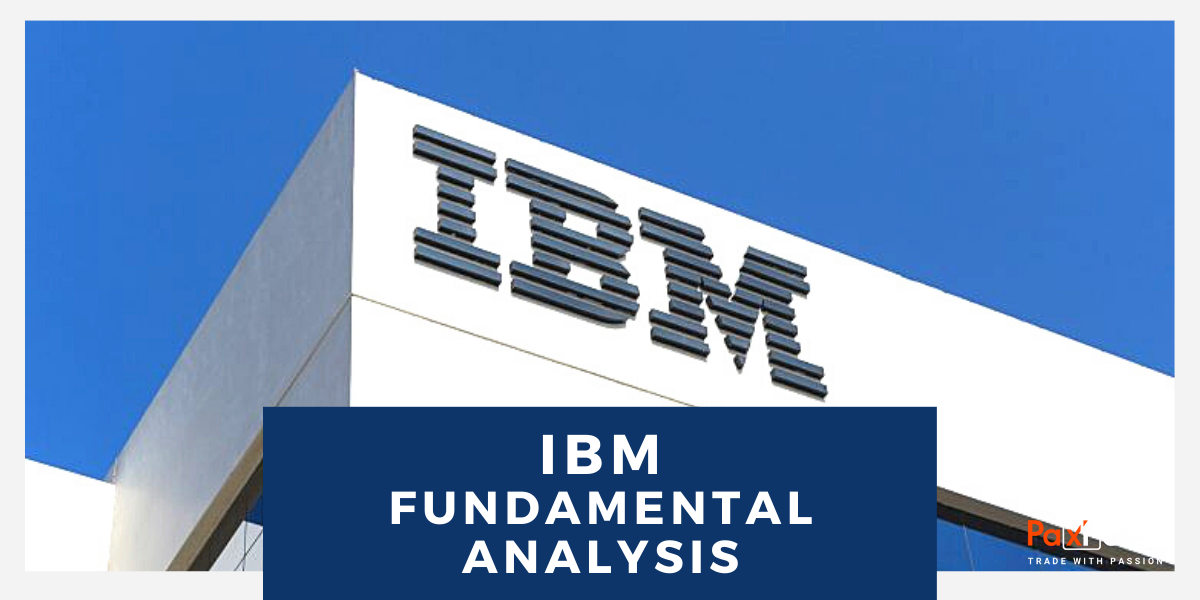
Source: PaxForex Premium Analytics Portal, Fundamental Insight
On July 19, IBM released its second-quarter earnings report. The tech giant experienced a 0.4% year-over-year decline in revenue, amounting to $15.5 billion, but when considering constant currency terms, revenue actually rose 0.4%. However, the reported revenue fell short of analysts' expectations by $70 million. Additionally, IBM's adjusted earnings per share (EPS) decreased by 6% to $2.18, but it still surpassed the consensus forecast by $0.76.
In response to the earnings report, IBM's stock saw a 1% dip during after-hours trading, and it has experienced an overall decline of about 5% year to date. This performance has left both the bulls and the bears relatively unenthusiastic about IBM's prospects. The question remains: Is it a wise decision to consider buying IBM as a long-term investment at this time?
In November 2021, IBM divested its managed infrastructure services segment, which became Kyndryl (KD -0.93%). Following this move, IBM underwent a restructuring process, dividing its business into three main divisions: software, accounting for 43% of its second-quarter revenue, consulting, accounting for 32%, and infrastructure, making up the remaining 23%.
Initially, IBM had projected its revenue to grow at a mid-single-digit rate from 2022 to 2024, with mid-single-digit growth in software revenue and high-single-digit growth in consulting revenue, compensating for the relatively flat growth in its infrastructure business. However, the company missed these long-term targets during the past year due to intensified macroeconomic headwinds.
In the second quarter, IBM witnessed an acceleration in year-over-year growth for its software and consulting businesses. However, its infrastructure business faced challenges due to tough comparisons with the successful launch of its z16 mainframe a year earlier. Nevertheless, the gap between reported and constant-currency growth rates narrowed as the value of the dollar stabilized. For the full year, IBM maintained its outlook for 3%-5% constant-currency revenue growth, with analysts expecting its reported revenue to rise by 3%.
IBM's most significant misstep in the past decade was losing ground in the public cloud market to industry giants like Amazon, Microsoft, and Alphabet's Google. Recognizing the difficulty of catching up to these cloud leaders, IBM shifted its focus to expanding its hybrid cloud ecosystem, enabling the analysis of data that flows between public cloud services and private clouds. Red Hat, an open-source software developer acquired by IBM for $34 billion in 2019, became a central component of this strategy.
Red Hat's performance has been promising, with an 11% year-over-year revenue increase in the second quarter, matching its growth rate from the first quarter. Notably, its hybrid cloud platform OpenShift experienced significant growth, surpassing "north of 40%" in the second quarter and generating $1.1 billion in annual recurring revenue (ARR). While this ARR accounts for only 2% of IBM's trailing 12-month revenue, its robust growth indicates that the hybrid cloud segment, which attracts larger companies reluctant to migrate all their data to public cloud platforms, is continuously expanding. This growth is especially noteworthy amid macro headwinds that have tempered the growth of many major public cloud companies.
By further deploying hybrid cloud services to analyze vast amounts of data, IBM establishes a strong foundation to launch more AI tools that assist companies in making smarter decisions. This approach capitalizes on the hybrid cloud's appeal to enterprises seeking to balance their data management needs while integrating AI capabilities to enhance their decision-making processes.
IBM remains confident in its ability to generate $10.5 billion in free cash flow (FCF) this year, representing a 13% increase from 2022. This strong cash flow is expected to cover its dividends, which amounted to $5.9 billion of its FCF in 2022, leaving ample room for the company to invest in and strengthen its hybrid cloud and AI platforms through new investments or acquisitions.
Analysts project IBM's adjusted earnings per share (EPS) to grow by 3% for the full year. With its stock still trading at reasonable 14 times forward earnings and offering an attractive forward yield of 4.9%, it presents a compelling opportunity for investors.
Through strategic moves like the divestment of Kyndryl, the acquisition of Red Hat, and the expansion of its hybrid cloud and AI platforms, IBM has managed to achieve stable revenue growth after years of stagnation. This progress, combined with the company's conservative valuation, increasing cash flows, and high dividend yield, positions it as an attractive option for income investors seeking a reliable and rewarding investment opportunity.
As long as the price is above 136.00, follow the recommendations below:
- Time frame: D1
- Recommendation: long position
- Entry point: 138.71
- Take Profit 1: 140.00
- Take Profit 2: 143.00
Alternative scenario:
If the level of 136.00 is broken-down, follow the recommendations below:
- Time frame: D1
- Recommendation: short position
- Entry point: 136.00
- Take Profit 1: 133.00
- Take Profit 2: 131.00













